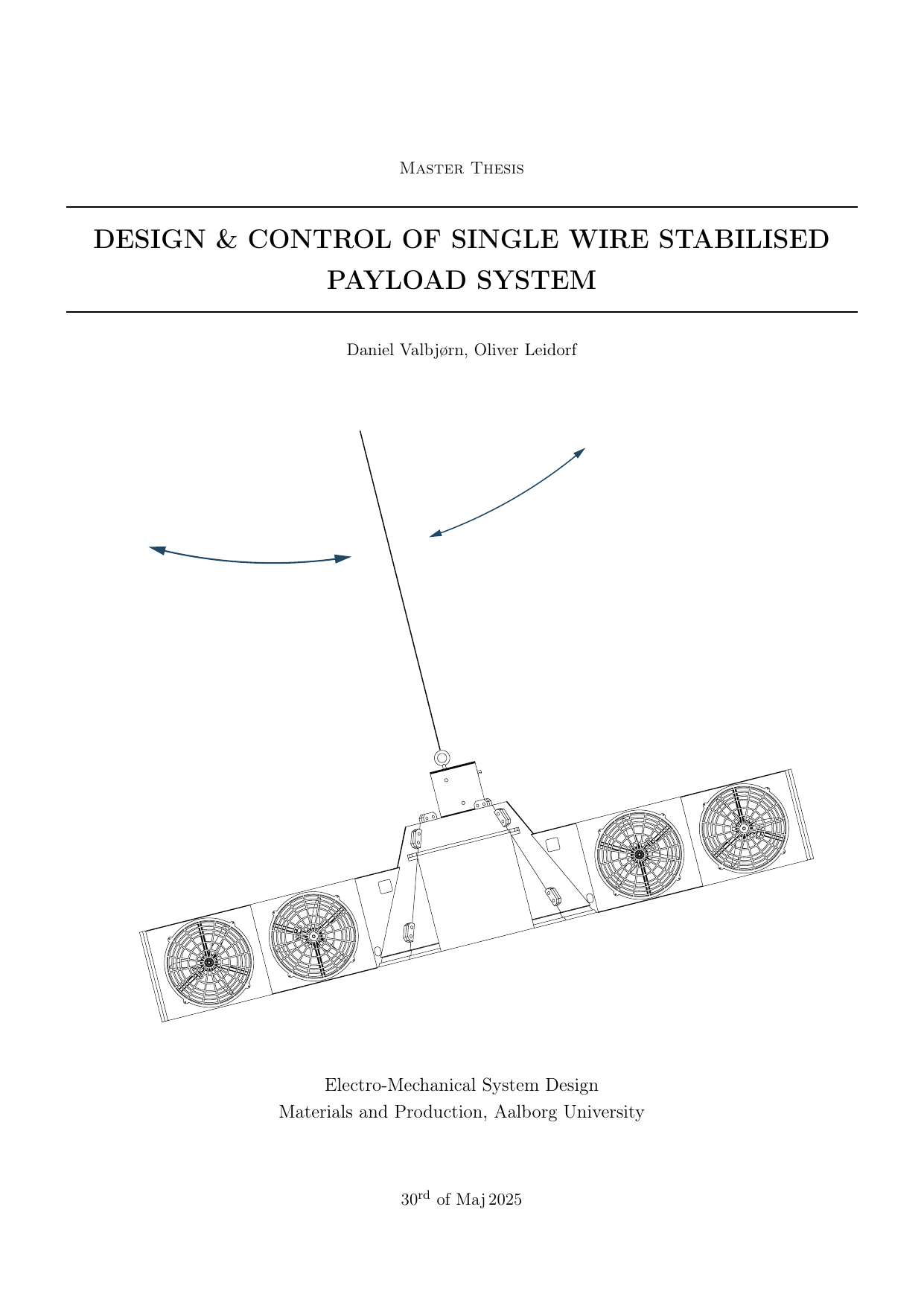
Design & Control of Single Wire Stabilised Payload System
Authors
Term
4. term
Education
Publication year
2025
Submitted on
2025-05-29
Pages
118
Abstract
In response to the rising demand for sustainable energy, the construction of wind turbines is increasing, and more wind turbines will need maintenance. A significant part of the lifetime cost of operating a wind turbine is the maintenance. Half of the maintenance cost is renting and operating the cranes. Airflight proposes using flying cranes to reduce the cost of delivering lightweight components. In this report, a solution will be designed to facilitate the use of flying cranes. The design aims to increase the distance between the flying crane and the wind turbine, which requires stabilisation of the lowered payload. The report aims to describe the development of a single-wire stabilised payload system (SPS) for delivering a payload from a flying crane to a wind turbine. The design of the SPS is derived from the use of the House of Quality and methodological analysis. This resulted in a design for the SPS system, featuring four BLDC motors aligned along the same axis. A model of the SPS system, comprising four BLDC motor models, a mechanical pendulum, and a yaw model, has been implemented in Simulink. The mechanical pendulum model has been derived using Euler-Lagrange mechanics, resulting in a system described by generalised coordinates. The models were verified to represent their real-world counterparts accurately. The models were linearised for use in the development of linear controllers, LQI and classical control theory were used. A prototype of the design was constructed, and the controllers were implemented to test the system. The results of the tests show that the SPS system dampened the oscillations at different wind speeds in $\approx10-15\ s$. This is a significant decrease in the dampening time compared to the natural system, which is $\approx70-180\ s$ without control. From the results, it can be concluded that a system capable of dampening oscillations at different wind speeds has been developed. However, further work is still required to develop a commercially viable product that can be effectively utilised in real-world scenarios.
Documents
